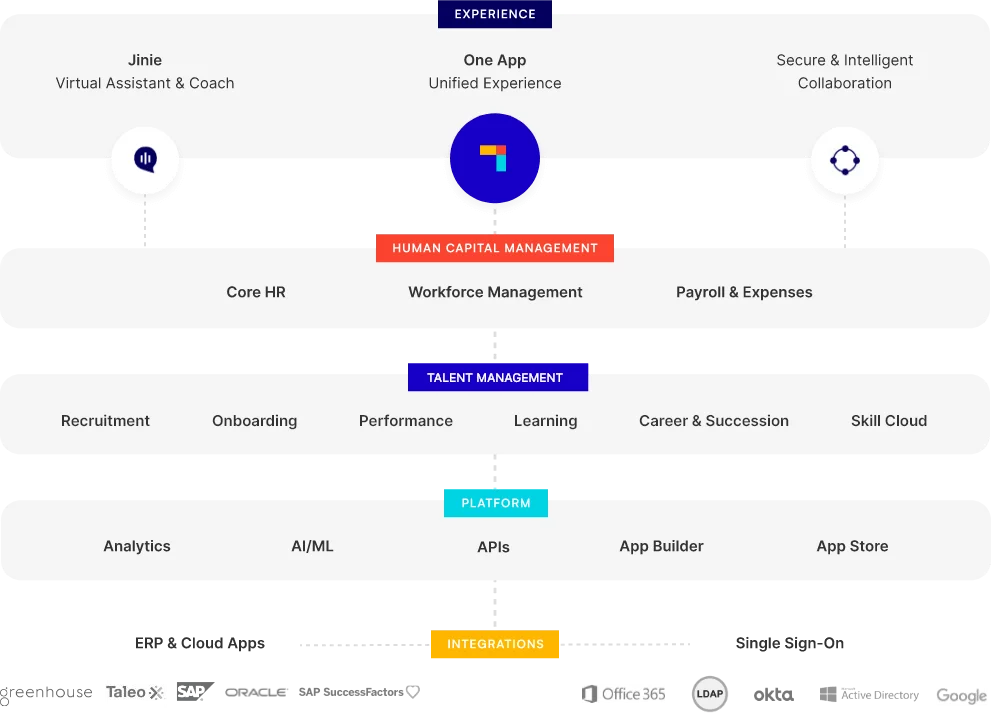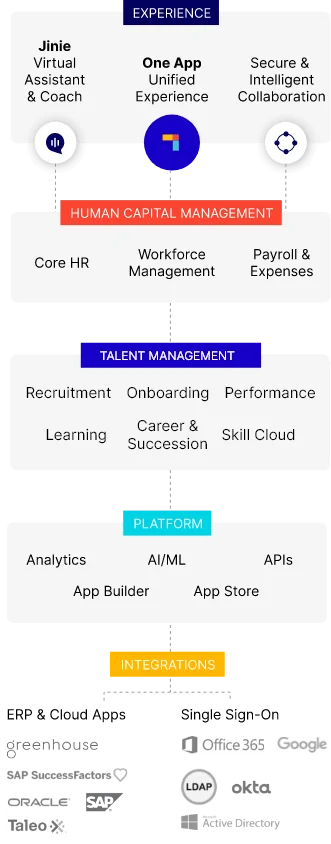Maximizing profits is key for any business, especially in the Middle East, with its unique economic and regulatory landscape.
To navigate this terrain successfully, it’s vital to use Key Performance Indicators (KPIs) that are specifically tailored to your industry. These KPIs are crucial tools, helping you track performance and make informed decisions that align with local business norms and regulations.
Say for instance, in UAE, a whopping 83% of employees feel engaged at work, according to the XM Institute’s 2024 study.
Why should this matter to you?
High engagement means your team is likely more productive and will stick around longer, which is great for business. In this article, we’ll explore KPIs, why they’re so important for growth and compliance, and how they can help you make smarter decisions in this fast-paced market.
What is KPI?
A key performance indicator (KPI) is essentially a compass that guides businesses toward their strategic goals by measuring their performance across various aspects.
Simply put, a KPI is a specific measure that helps you understand whether your business is on track to achieve its objectives.
For example, consider the KPI of “Employee Turnover Rate,” which is crucial for HR professionals. If your goal is to improve employee retention, tracking how many employees leave each year can help you gauge the effectiveness of your retention strategies.
Lower turnover rates can indicate a positive work environment and effective HR policies. They can also guide you toward better decisions to enhance employee satisfaction and loyalty.
Difference between KPIs and Metrics
Key performance indicators (KPIs) and metrics both essentially measure performance. However, KPIs are strategically linked to business objectives, while metrics can track any business activity but are not necessarily tied to overall success.
Here’s a breakdown of the differences:
| Aspect | KPIs | Metrics |
| Purpose | Designed to evaluate success towards strategic goals. | Measure processes or activities. |
| Impact | Directly linked to organizational success and strategic objectives. | Useful for operational improvements. |
| Usage | Focus on critical areas that determine success. | Can be used broadly across all business functions. |
| Nature | Often quantifiable and tied to business outcomes. | Can be qualitative or quantitative. |
| Decision-making | Drive strategic decision-making and adjustments. | Inform day-to-day operational decisions. |
| Examples | Revenue growth rate, customer retention rate, employee turnover rate. | Website traffic, number of calls received, hours worked. |
Why are KPIs Important for Middle East Organizations
In the Middle East, where business dynamics are unique, understanding and using Key Performance Indicators (KPIs) is crucial. Here’s why KPIs matter for your organization:
1. Set Clear Expectations
KPIs act like a map for your team, showing exactly what success looks like. When everyone knows their targets, there’s less confusion and more focus. Clear KPIs make it easier for employees to meet their goals, enhancing overall efficiency and productivity.
2. Save Time on Supervision
With KPIs in place, managers don’t need to micromanage. Employees have clear objectives, allowing supervisors to spend less time overseeing day-to-day activities and more time on strategic planning and other critical tasks.
3. Improve Performance
KPIs provide measurable outcomes that help identify both strengths and areas for improvement within your organization. This targeted feedback allows for tailored development programs and interventions, leading to continuous improvement and growth.
4. Boost Morale
By clarifying how each role impacts the organization, KPIs empower employees. Understanding their contribution can increase job satisfaction, motivation, and commitment to the company’s goals, thus fostering a more engaged and productive workforce.
5. Stay Compliant
In regions with strict regulatory requirements, like the Middle East, KPIs ensure that your operations comply with legal standards. They help track and document compliance with labor laws, preventing legal issues and promoting ethical business practices.
Types of KPIs
KPIs fall into three main categories: Strategic, Operational, and Functional. Each type plays a crucial role in guiding business decisions and strategies. Let’s look at these types in brief:
1. Strategic KPIs
These are high-level indicators that provide a snapshot of the overall health of an organization. Strategic KPIs are primarily used by executives and top management to assess the company’s progress towards long-term goals.
Examples include Return on Investment (ROI), profit margin, and total company revenue. While they offer a broad view of performance, strategic KPIs may not provide detailed insights into specific operational or functional areas.
2. Operational KPIs
These KPIs are more immediate and focus on the day-to-day operations of a business. Operational KPIs help managers and team leaders monitor and evaluate the effectiveness of various business processes over shorter time frames, such as monthly or daily.
They are crucial for understanding the dynamics of different segments, processes, or locations within the company. For instance, if a strategic KPI shows a dip in company-wide revenue, operational KPIs can help pinpoint which product lines or regions are underperforming.
3. Functional KPIs
These are specific to individual departments or functions within an organization. Functional KPIs provide targeted insights that are valuable to specific teams or departments.
For example, the finance department might track the number of new vendors added to the system monthly, whereas the marketing team measures engagement metrics like email click rates.
These KPIs can be either strategic or operational in nature but are tailored to meet a department’s specific needs, supporting more granular improvements and reporting.
Understanding these different types of KPIs allows organizations to measure performance at various levels effectively. Here is a further breakdown of KPIs into types that can help in specific aspects of business monitoring and strategic planning:
| Type of KPI | Description | Examples |
| Quantitative KPIs | Metrics that are numerically measurable. | Revenue growth, profit margins |
| Qualitative KPIs | Metrics based on qualities or descriptions are often subjective. | Employee satisfaction, customer testimonials |
| Leading KPIs | Indicators that predict future performance. | New leads, project milestones |
| Lagging KPIs | Indicators that reflect past results. | Historical financial results, customer retention rates |
| Input KPIs | Measure resources used for producing something. | Resources used, employee hours |
| Process KPIs | Focus on the efficiency or productivity of a process. | Throughput, compliance rates |
| Output KPIs | Measure the output or results of business activities. | Product output, services delivered |
| Practical KPIs | Track day-to-day operations to gauge immediate performance. | Daily active users, incident reports |
| Directional KPIs | Indicate the direction in which a company or market is moving. | Market trends, customer behavior |
| Actionable KPIs | Provide clear action points based on performance data. | Improvement targets, change management |
How to Frame KPIs Perfect For Your Business
Setting up the right KPI will guide your journey towards success. Here’s how you can develop KPIs that really drive your business forward:
1. Align Your KPIs with Organizational Goals
Your KPIs need to match up with what your organization aims to achieve. If the big picture concerns growing market share, your KPIs should directly reflect metrics that gauge market expansion or customer acquisition. Make sure you:
- Regularly review organizational goals and ensure KPIs are updated to reflect any changes.
- Involve senior management in the KPI setting process to align efforts and resources effectively.
2. Establish Clear Governance Structures
It’s crucial to define who’s in charge of the KPIs. This clarity will help manage KPI tracking and ensure everyone knows who to report to and how the KPIs fit into the broader business strategy. Here’s how you can go about it:
- Create a KPI committee with members from different departments to oversee KPI integration.
- Document and communicate the governance structure across the organization to avoid confusion.
3. Define the Performance Management Lead Entity’s Functions
This is about laying out who does what. The entity, whether a person or a team, should have a clear mandate to design the performance framework, set realistic targets, and ensure they’re met. Make sure you:
- Assign specific roles and responsibilities to avoid overlap and ensure accountability.
- Conduct regular training and development sessions to keep the entity well-equipped and informed.
4. Select Performance Measurement Approaches
Choose approaches that focus on outcomes rather than just outputs. This means looking beyond the numbers to understand the impact and effectiveness of your strategies and actions. Here are some best practices to go about it:
- Use a mix of qualitative and quantitative data to get a comprehensive view of performance.
- Set up regular review meetings to assess the effectiveness of the chosen measurement approaches.
5. Incorporate Legal and Economic Considerations
Especially in the Middle East, you must consider local laws and economic conditions when setting KPIs. This ensures that your business not only thrives but also complies with local regulations. However, for this, you need to:
- Stay updated with regional legal changes and economic trends.
- Engage with local experts and legal advisors to ensure your KPIs are compliant and relevant.
6. Utilize Advanced Data Systems
Leverage technology to gather, manage, and analyze performance data. Effective use of IT solutions can simplify these processes and provide more accurate insights. Make sure you:
- Invest in scalable data management systems that grow with your business.
- Train your staff on how to use these systems efficiently and make data-driven decisions.
How to Measure KPIs
Measuring KPIs effectively ensures that your business doesn’t just operate on assumptions but is guided by actual performance data. Here’s how you can measure KPIs systematically:
1. Define the Data Sources
Identify where your KPI data will come from. This could be internal systems like sales records or external sources like market research reports. Ensuring that your data sources are reliable and relevant to the KPIs is crucial for accurate measurement.
2. Collect Data Consistently
Set up a regular schedule for data collection to maintain consistency. Whether it’s daily, weekly, or monthly, sticking to a routine ensures you have a continuous stream of data, which is vital for tracking performance and trends over time.
3. Utilize Analytics Software and Tools
Using advanced analytics software and tools is key to measuring your KPIs effectively. Tools like PeopleStrong automates data collection and analysis, giving you real-time insights right when you need them.
With PeopleStrong, you can easily track all your HR metrics, from hiring to retention. Plus, its dashboards are super user-friendly, making it easy to understand your data and make quick, informed decisions.
4. Establish Baseline Measurements
Before you can measure progress, you need to know where you started. Establish baseline measurements for each KPI. This initial benchmark will serve as a point of comparison for all future data, helping you see how far you’ve come and how far you need to go.
5. Set Performance Targets
Define success by setting clear, achievable targets for each KPI. These targets should challenge your organization but remain realistic. They act as goals that motivate your team and drive performance improvements.
6. Compare Against Targets and Benchmarks
Regularly compare your current performance data against the established targets and industry benchmarks. This comparison not only shows if you are meeting or exceeding your goals but also how you stack up against competitors, providing a clear picture of where improvements are needed.
KPI Examples
Let’s look at some primary KPI examples that are critical for managing various aspects of a business:
1. Net Profit Margin
This financial KPI measures overall profitability after accounting for all expenses.
It is calculated using the formula: Net Profit / Revenue.
This indicator is crucial for assessing the bottom line and understanding how effectively a company converts revenue into profits.
2. Days Sales Outstanding (DSO)
This measures the average number of days a company takes to collect payment after a sale.
The formula is: (Accounts Receivable / Total Credit Sales) x Number of Days.
It’s vital for managing cash flow and understanding the efficiency of the accounts receivable process.
3. Customer Acquisition Cost (CAC)
This KPI calculates the cost involved in acquiring new customers.
It is determined by dividing the total acquisition costs by the number of new customers.
It’s essential for evaluating the effectiveness of marketing strategies and the efficiency of spending related to customer acquisition.
4. Employee Turnover Rate (ETR)
This human resources KPI measures the rate at which employees leave a company.
It’s calculated as: (Number of Departing Employees / Average Number of Employees) x 100.
Monitoring this KPI helps understand employee retention and the overall satisfaction of the workforce.
3 Tried And Tested KPI Best Practices
To get the most out of your Key Performance Indicators (KPIs), it’s crucial to implement them wisely. Here’s how you can make sure your KPIs are set up to drive your business forward:
1. Create KPIs from the Top Down
Start by aligning your KPIs with the broad visions and goals of your country or region. Then, drill down to align them with your specific organizational and departmental objectives. This ensures that every team and individual works towards goals that contribute directly to the top-level strategy.
It helps everyone see how their daily work impacts the bigger picture, making their roles more meaningful and driving greater engagement and performance across the board.
2. Leverage Data Visualization Tools for Clarity
Using tools like PeopleStrong can transform how you see and understand your KPIs. PeopleStrong’s data visualization capabilities allow you to turn complex data sets into clear, easy-to-understand graphs and charts.
This not only makes it easier for you to spot trends and issues at a glance but also helps communicate these insights across teams, ensuring everyone understands and is aligned with what the KPIs are showing. It’s all about making data accessible so that everyone can make better decisions faster.
3. Cultivate a Performance-Oriented Culture Through Training and Development
This is about ensuring everyone’s on the same page about what’s expected and how to achieve it. Tailor your training and development programs to meet the local needs of your workforce, focusing on areas that directly impact the KPIs you care about.
Encourage a culture where continuous improvement is valued. Offer regular training sessions that help employees develop the skills they need to excel in their roles and impact the KPIs positively. By investing in your team’s growth, you’re not only boosting their morale but also driving up their ability to meet and exceed their performance targets.
As We Conclude
KPIs are not just numbers—they are critical tools that drive business success, especially in complex markets like the Middle East. As you harness the power of KPIs, integrating technology becomes indispensable.
A performance management software not only simplify data management but also enhance your ability to visualize and analyze performance metrics in real-time. Embracing such technologies ensures that your KPI strategies are robust, agile, and aligned with your organizational goals, ultimately leading to sustained business growth and competitive advantage.
Now, to really nail your KPI strategy, it’s crucial to bring in technology that can handle the heavy lifting. And PeopleStrong can do exactly that for you. It simplifies all that complex data into visual insights you can act on fast.
Ready to boost your business performance?
Check out PeopleStrong and see how it can streamline your KPI management.













